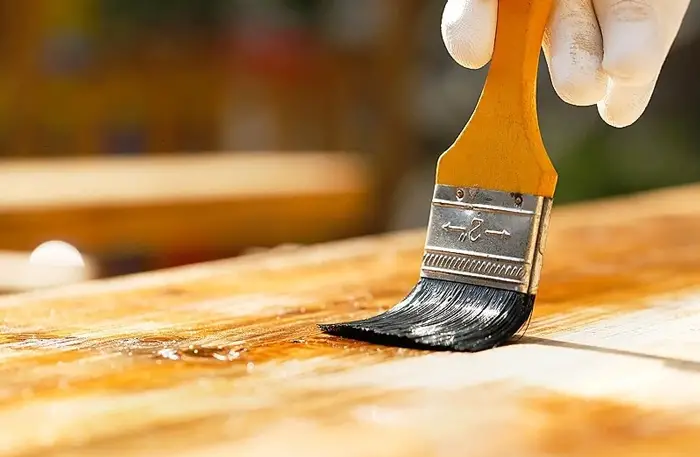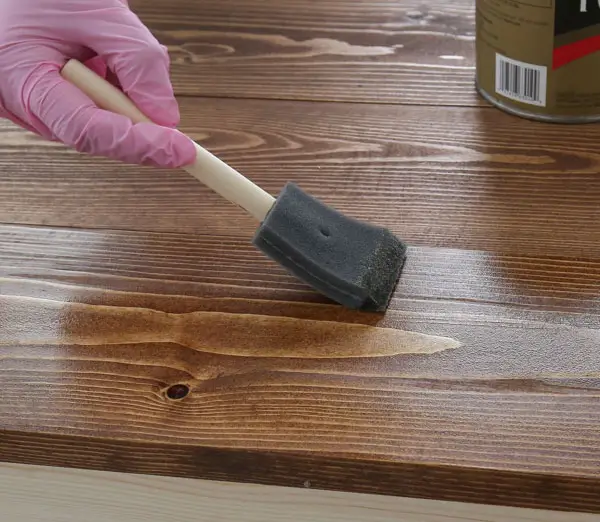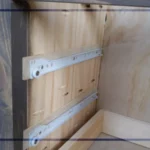Can You Put Polyurethane Over Varnish? Everything You Need To Know
Varnish and Polyurethane are used as the final coating to make your light-colored wooden furniture glossy. There are some do’s and don’ts you must follow before you start putting polyurethane over varnish.
So, can you put polyurethane over varnish? The simple answer is Yes, you can. Just remember to use the same types of Polyurethane and Varnish. Contrasting coatings are not an issue, but you might have problems with good finishing. Also, don’t varnish over polyurethane. It will prevent varnish from getting soaked in the wood.
Throughout this article, we will explain how to apply Polyurethane over a Varnish coat finish. Also, there are some necessary details you need to know. Let’s get started.
Table: Polyurethane and Varnish

Before we jump into details, let’s look into some of the aspects of Polyurethane and Varnish.
| Aspect | Polyurethane | Varnish |
|---|---|---|
| Composition | Synthetic resin | Resin, solvent, and drying oils |
| Application | Can be used on various surfaces | Primarily used on wood surfaces |
| Drying time | Longer drying and curing time | Relatively faster drying time |
| Finish | Glossy or satin finish | Glossy finish |
| Color options | Available in clear and tinted versions | Limited color options |
| Protection | Offers excellent UV resistance | Provides good resistance to heat and moisture |
| Recoating | Can be easily recoated | Requires complete removal before recoating |
| Maintenance | Requires minimal maintenance | May need periodic reapplication |
| Odor | Can have a strong odor during application | May have a mild odor |
Can You Put Polyurethane Over Varnish?
Yes, you can, and applying Polyurethane Over Varnish will surely make your furniture look awesome. Polyurethane is a versatile and durable synthetic resin commonly used as a protective finish for various surfaces.

Both its oil-based and water-based varieties provide excellent resistance to abrasion, chemicals, and UV damage. That makes it suitable for indoor and outdoor applications. In addition to enhancing the wood’s inherent beauty, it also offers long-lasting protection and a glossy or satin finish.
On the other hand, Varnish is a clear or transparent coating applied to surfaces, primarily wood. It enhances the appearance and provides protection. Moreover, it is typically made from a mixture of resins, solvents, and drying oils. But remember, it is not wise to apply varnish over polyurethane.
How To Apply Polyurethane Over Varnish?

There are a few easy steps you can do it with;
Preparing the Varnished Surface
- Examine the varnish for any damage. Check for any areas where the varnish is peeling off, cracked, or flaking away. These signs of peeling, cracking, or flaking indicate that the varnish is damaged and may need to be addressed before applying polyurethane.
- Test the varnish’s adhesion. Press your finger gently on different areas of the varnish to assess its adhesion. If the varnish feels loose or unstable when pressed, it suggests poor adhesion and may require removal before applying polyurethane.
- Look for visible signs of damage, like discoloration or bubbles on the varnish surface. When the varnish is deteriorating, remove it completely before applying polyurethane for a fresh surface.
- Clean the surface with a mild detergent or wood cleaner, rinse it thoroughly to remove dirt, grease, and other impurities, and allow it to dry completely.
- Identify rough or uneven surface areas and lightly sand them using fine-grit sandpaper.
- After sanding, remove the sanding dust using a tack cloth or a vacuum cleaner.
Applying Polyurethane Over Varnish
Choosing compatible varnish and polyurethane products is essential for a successful application. Check the labels or product descriptions to ensure that the polyurethane is suitable for use over varnish.
Then, follow these steps for applying polyurethane over varnish:
Step 1: Choose a polyurethane product (our pick:) that is compatible with varnish. Use a high-quality brush, foam brush, or sprayer for application.
Step 2: Ensure the polyurethane is well-mixed before application. Also, cover the surrounding area to prevent accidental spills or drips.
Step 3: Apply the first coat of polyurethane. Dip the applicator brush into the polyurethane, ensuring it is evenly coated. Apply the polyurethane with thin, even strokes in the direction of the wood’s grain. Work systematically, covering a small area at a time. Avoid over-brushing to prevent bubbles or streaks.
Step 4: Lightly sand the dried first coat. Use fine-grit sandpaper with a 220-320 grit rating to remove any flaws. Wipe away the sanding dust with a tack cloth or vacuum.
You can also check out this YouTube video for easy understanding:
Curing, Drying, and Recoating
After applying all desired coats, allow the final coat to cure fully. Follow these simplified processes to ensure that:
- Avoid touching or using the finished surface for the recommended curing time.
- Provide adequate airflow to help the polyurethane dry and cure effectively.
- Keep the surface protected from water or excessive humidity during the curing process.
- If additional coats are desired, lightly sand the cured surface before applying subsequent coats following the previous application steps.
How To Maintain A Polyurethane Over Varnish Surface

Follow these tips to maintain and protect the finish, as well as address potential issues that may arise:
Maintaining and protecting
- Avoid placing hot objects directly on the surface
- Use coasters or protective pads under objects
- Regularly dust the surface with a soft cloth or microfiber duster
- Clean up spills promptly
- Avoid using abrasive cleaners or harsh chemicals
Cleaning and preserving the finish
- For normal cleaning, use a gentle, non-abrasive cleanser
- Use a gentle cloth or sponge to apply the cleanser
- Wipe down the surface in the same direction as the wood grain
- After washing, use a soft towel to completely dry the surface
Potential issues and how to address them
- Scratches or scuffs: Lightly sand the area, clean, and recoat with polyurethane
- Fading or yellowing: Minimize sunlight exposure. Consider UV-protective window treatments
- Peeling or flaking: Remove and reapply polyurethane if necessary
FAQs
Let’s explore a few commonly asked questions on applying polyurethane over Varnish.
Q: Is polyurethane stronger than varnish?
Yes. Polyurethane is typically harder and more durable than varnish, making it a popular choice for sealing wood floors. However, due to its lack of flexibility, polyurethane may not be suitable for wood pieces that undergo movement or flexing.
Q: Should we use varnish or polyurethane?
Varnish is ideal for exterior finishes on decks and patio furniture, while polyurethane is better suited for indoor wooden surfaces. Varnish is durable and cost-effective, especially for softer woods. On the other hand, polyurethane dries faster and requires fewer coats but is not suitable for outdoor use.
Q: Can you put polyurethane over water-based varnish?
Yes, you can put polyurethane over water-based varnish once it has completely cured, which usually takes 30 to 60 days. To prepare the surface, lightly buff the old finish with a power buffer before applying the polyurethane. This ensures a strong bond between the coatings, resulting in a durable and appealing finish.
Conclusion
Polyurethane and varnish can be a great combination for light-colored wooden furniture. So you can stop worrying about whether can you put polyurethane over varnish or not. Examine and prepare the varnished surface, choose compatible products, and apply polyurethane in thin coats.
Allow sufficient curing time and maintain the finish by promptly addressing spills and avoiding abrasive cleaners. Throughout this article, we have explained the whole process and procedures. By understanding the coatings and following these guidelines, you’ll achieve a durable and attractive result.





